From the back cover: If you could ask a ghost any question, what would it be? Have you thought about ghost hunting? Do you dream of exploring a haunted locale but don't know where to start? Want to learn more about ghost hunting, but you don't understand all of the paranormal lingo? The excitement of ghost hunting is enticing people all over the world. Whether it’s solving the mystery of the afterlife or the allure of the unknown, the paranormal field teases us just enough to want to dive in head-on. But exploring the paranormal can also be overwhelming and confusing. In this book, you will learn about multiple areas of the paranormal from ghost hunting, research, evidence review, equipment, to what to do when you encounter a ghost. Join Alex Matsuo, respected paranormal researcher and leader in the ghost hunting field, as she walks you through the basics of becoming a ghost hunter. Alex is known for her balance of skepticism, belief, and rigorous research. You can apply her strategies to your paranormal experience with this how-to manual. Are you brave enough to take the plunge?
New Books and Media
The Brave Mortal's Guide to Ghost Hunting, by Alex Matsuo
Publish Date: November, 2019
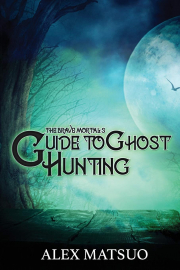
The Search for Heaven: A historian investigates the case for the afterlife, by Jean-Pierre Isbouts.
Publish Date: November, 2019
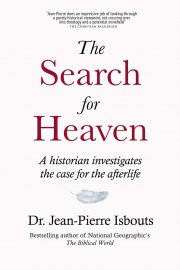
From the back cover: If there is a heaven, as countless Near-Death Experiences suggest, shouldn’t modern science be able to identify its existence? This is the central question with which historian Dr. Jean-Pierre Isbouts embarked on an ambitious research project at Fielding Graduate University, drawing from quantum physics, neuroscience, astrophysics, electromagnetic energy, Asian health practices, faith traditions, and psychic observations. Written in the engaging style that made him a bestselling National Geographic author, Dr. Isbouts guides the reader step by step through the evidence while building an operational model of the afterlife. In the last chapter, he compares this model to Jewish, Christian, Muslim, Hindu and Buddhists concepts of heaven, concluding that our religious ideas have much more in common than we realize.Immersive, witty, and illustrated with astonishing observations by the renowned British psychic Sue Dunderdale Jones,
Britain’s Paranormal Forests: Encounters in the Woods, by Peter A. McCue
Publish Date: October, 2019

From the publisher's website: Peter A. McCue examines intriguing reports of people experiencing uncanny events in Britain’s woods and forests, from mysterious lights and strange animal encounters to ghostly experiences. Much of the reported witness testimony was obtained first-hand by McCue or other researchers. While he draws sceptical conclusions about some of the alleged incidents, he takes others seriously and considers possible explanations. Fully illustrated and written in McCue’s inimitable style, Britain’s Paranormal Forests will make you think again about your next walk in the woods.
Physics and Psychics: The Occult and the Sciences in Modern Britain, by Richard Noakes
Publish Date: October, 2019
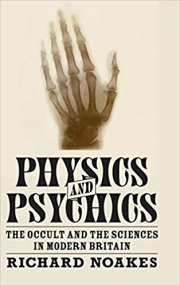
From the publisher's website: This is the first systematic exploration of the intriguing connections between Victorian physical sciences and the study of the controversial phenomena broadly classified as psychic, occult and paranormal. These phenomena included animal magnetism, spirit-rapping, telekinesis and telepathy. Richard Noakes shows that psychic phenomena interested far more Victorian scientists than we have previously assumed, challenging the view of these scientists as individuals clinging rigidly to a materialistic worldview. Physicists, chemists and other physical scientists studied psychic phenomena for a host of scientific, philosophical, religious and emotional reasons, and many saw such investigations as exciting new extensions to their theoretical and experimental researches. While these attempted extensions were largely unsuccessful, they laid the foundations of modern day explorations of the connections between physics and psychic phenomena. This revelatory study challenges our view of the history of physics, and deepens our understanding of the relationships between science and the occult, and science and religion.
Further information at the publisher's website: Cambridge University Press.
Psychological Perspectives on Reality, Consciousness and Paranormal Experience, by Tony Jinks
Publish Date: October, 2019
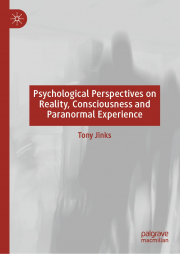
From the publisher's website: Examines the three dominant perspectives accounting for paranormal encounters. Draws on cross-disciplinary research including recent advances in consciousness studies, parapsychology, anomalistic psychology and psychological theory. Provides an overview of the philosophical and psychological origins of explanations for paranormal experiences, from the 19th century to the present.
This book explores various explanatory frameworks for paranormal encounters. It opens with the story of an inexplicable human figure seen crossing a secluded hotel corridor, interpreted as a ghost by the sole witness. The subsequent chapters explore the three most important historical perspectives accounting for this and other types of paranormal experience. Each perspective is examined from first principles, with specific reference to what happened in the corridor, how it happened, why it happened, and who might be responsible.
The first perspective considers the experience to be legitimate – to be something real – and various possibilities are presented that are grounded in the paranormal and parapsychological literature, among which a “ghost” is one putative explanation. In turn, the second perspective treats the experience as being wholly illegitimate. With reference to psychological theory, the ghost sighting is a product of erroneous consciousness. The third perspective is different yet again, and considers the sighting to be authentic, but argues that explaining the ghost requires a radical departure from conventional models of reality and consciousness. By contrasting these three paths, the book provides a valuable resource for readers interested in the philosophical and psychological origins of explanations for paranormal experiences, from the 19th century to the present. It will appeal to general readers in addition to students and scholars of parapsychology, anomalistic psychology, and consciousness studies.
Further information on the publisher's website: Palgrave Macmillan.
Séance, by Shannon Taggart
Publish Date: October, 2019
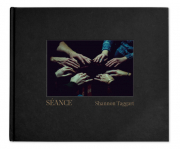
From the publisher's website: A major 300 page photographic exploration of contemporary Spiritualism, documented over eighteen years. With a foreword by Dan Akyroyd, an introduction and stories by Shannon Taggart and supporting contextual essays from Andreas Fischer and Tony Oursler.
American artist Shannon Taggart became aware of Spiritualism as a teenager, when her cousin received a message from a medium that revealed details about her grandfather’s death. In 2001, while working as a photographer, she began taking pictures where that message was received – Lily Dale, New York, home to the world’s largest Spiritualist community – proceeding to other such communities as England’s Arthur Findlay College. Taggart expected to spend one summer figuring out the tricks of the Spiritualist trade. Instead, Spiritualism’s mysterious processes, earnest practitioners, and neglected photographic history became an inspiration. Her project evolved into an eighteen-year journey that has taken her around the world in search of ‘ectoplasm’ – the elusive substance that is said to be both spiritual and material.
With Séance – part documentary, part ghost story – Taggart offers us haunting images exploring Spiritualist practices in the US, England and Europe: 150 of her original photographs, many of which have never been published, as well as rare historical photographs. Supported with a commentary on her experiences, a foreword by Dan Aykroyd, creator of Ghostbusters (1984) and fourth-generation Spiritualist, and illustrated essays from curator Andreas Fischer and artist Tony Oursler, SÉANCE examines Spiritualism’s relationship with human celebrity, its connections to art, science, and technology, and its intrinsic bond with the medium of photography. The book concludes with the debate over ectoplasm and how Spiritualism can move forward in the twenty-first century.
Further information on the publisher's website: Fulgur Press.
Files of the unexplained: The hidden history and forgotten photographs from the world of the unknown, by Clas Svahn
Publish Date: September, 2019
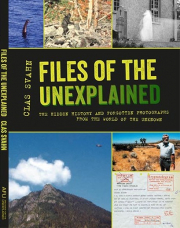
The real "X-Files" exists! A giant archive with several million images, films, articles and documents about ghosts, UFOs, sea monsters, unusual natural phenomena, paranormal abilities and other enigmas not yet fully explained. Since 1973, a group of enthusiasts has gathered what is now the world's largest collection of the unknown. A despository of knowledge about riddles and mysteries used by scientists and interested people from all over the world - skeptics as well as believers. For the first time, the story of Archives For the Unexplained is now being told and some of the secrets that are preserved in its premises are shown to the public.
Leaps of Faith: Ghost Hunting and Objectivity, by John M. Black
Publish Date: September, 2019
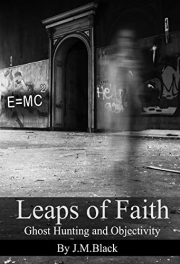
Ghosts and the paranormal have been part of the human experience for centuries, and play a role in everything from Hamlet to Hollywood blockbusters. The evidence for ghosts, however, has always stayed on the periphery of science. Ghost hunting today is growing in popularity and is aided by modern equipment, but it must also be subject to modern standards of experimentation and objectivity. Strange events can sway even the most rigid skeptic, but it’s crucial that we see them for what they are, not just what we want them to be. Whether you’re a believer, a skeptic, or somewhere in between, this book will challenge your beliefs and force you to re-examine the evidence—and fakery—behind modern ghost hunting.
Near-Death Experiences: A Historical Exploration from the Ancient World to the Present Day, by Marisa St Clair
Publish Date: September, 2019
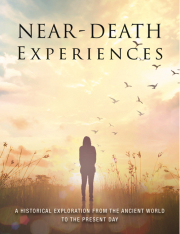
From the publisher's website: Is death really the end? Do we each have a soul or spiritual essence that will journey on once the body has turned to dust? Will death appear as an oblivion or a nightmare? In recent decades – and thanks to sophisticated resuscitation techniques – research has grown into the number of people who have died and then returned to tell us of their experience. Doctors have noted that descriptions of near-death experiences (NDE), despite the people having very little in common, were remarkably consistent. All spoke of a sense of peace, of travelling through a tunnel towards light, of seeing cities of light and hearing celestial music. Some even overheard conversations that wouldn’t normally have been possible. Illustrated throughout with colour and black-&-white photographs and artworks, Near-Death Experiences examines in detail a wide range of NDE case studies, including children and adults, sceptics and deeply religious people, as well as those who were expecting death and others caught in sudden accidents. This thoughtful analysis offers a glimmering of what lies beyond.
This is a reprint of Beyond the Light: Files of Near-Death Experiences
Penetration: Special Edition: The Question of Extraterrestrial and Human Telepathy, by Ingo Swann
Publish Date: September, 2019
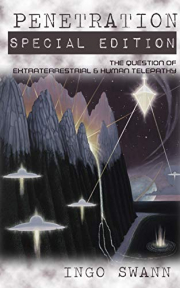
From the publisher's website: Ingo Swann -- renowned psi researcher -- reveals a long-held secret series of experiences with a "deep black" agency whose apparent charter was simple: UFOs and extraterrestrials on the moon and worries about ET telepathic/mind control powers. The agency was so secret that it had no paper trail, and hence no written secrecy agreements. Only the verbal ones, which in Ingo's case expired several years ago. Now, in this era of burgeoning UFO "glasnost," he tells a story of meetings held in a secret underground facility not far from Washington DC, and of being taken to a remote location near the Arctic Circle to witness the expected arrival of a huge UFO over the surface of an Alaskan lake. This book discusses undeveloped human telepathy and contrasts it with the probable existence of fully developed alien telepathy, which may have many different forms. Ingo also explores the fact that we officially know far more than we're admitting about the Moon -- its origins, its atmosphere, its occupants and many other unusual features. Penetration is about one of the means by which we can learn more about those not of this earth (and vice-versa) -- telepathy. Do we have the means to answer some very important questions that many have been asking for quite a long time? Inside this book are the answers to some.PLUS...In a newly discovered missing chapter on his psychic probes of Mars ("9") to Penetration, Ingo asserts that there is a bigger question at play - the question as to "why do mass-consciousness humans, as it were, mass-consciously almost 'conspire' to avoid certain issues, and consistently so?" This inquiry, deep within Ingo's own awareness, is one that he would ponder until his passing in 2013. He no doubt wished to share this interrogation with the world back in 1998, but was uncertain how. Thus to commemorate and celebrate his birth sign (Virgo), we have put Ingo's question to the world by including "9" along with an Introductions by Dr. Krippner and Dr. Mitchell and Afterword by Thomas McNear, Lieutenant Colonel U.S. Army (Ret.), in this Special Edition.
Shining Light on Transcendence: The unconventional journey of a Neuroscientist, by Peter Fenwick
Publish Date: September, 2019
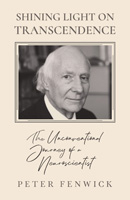
What is consciousness? How does it relate to the brain, to the mind? Does it even extend beyond them? And if so, might those experiences — telepathy, extrasensory perception, near death experiences — be called ‘paranormal’ because we can’t explain them by any normal means?
Anything with a firm belief structure, whether it is science or religious faith, limits experimentation and a free spirit of enquiry. I wanted to find a synthesis between these two fields of experience, the measurable and the immeasurable. And it seemed to me that the best – indeed, the only way I could find out more was by finding people who had such immeasurable experiences and studying them ... - Peter Fenwick
Further information on the publisher's website: White Crow Books.
The Forever Angels: Near-Death Experiences in Childhood and Their Lifelong Impact, by P. M. H. Atwater
Publish Date: September, 2019

From the publisher's website: In this major study of near-death experiences with the newly born, babies, toddlers, and children up to age five, NDE expert P. M. H. Atwater reveals how those who experience a near-death state or other worlds at a very young age are profoundly affected for the rest of their lives, including developing psychic and intuitive abilities, higher intelligence and “wisdom beyond their years,” and a pervasive feeling of being “homesick for heaven.”
Drawing on interviews with nearly 400 childhood experiencers, both fully matured and young, Atwater explores their accounts of what it is like to be alive on the other side of death as well as what makes them different from others, complemented by a deep analysis of statistical evidence from her more than 40 years of NDE research involving more than 5,000 people. She shows how, in contrast to adult experiencers, child and infant experiencers of near-death states cannot compare “before” with “after” as adults do, because they don’t have a “before.” The world of these “forever angels” is the life continuum, a stream of consciousness that has always existed and always will. Integrating “where they once were” with “where they now are” is a lifelong challenge. The author explores how those who have a near-death experience very early in life, or even in utero, grow up “different”--sometimes geniuses, sometimes lost, yet unusually psychic and smart, all at the same time. She reveals how these experiences and their knowledge of the afterlife affect the individual in many areas, including family life, dating, health, education, and spirituality, as well as increasing the experiencer’s potential for thoughts of suicide, out-of-body experiences, and PTSD symptoms.
Examining the forever angels’ memories of the womb, birth, early childhood, and the other world, Atwater investigates the wide-awake consciousness of babies being born, the vivid recall of mature childhood near-death experiencers, and how memory of the life-continuum never fades, nor does the desire to go back.

